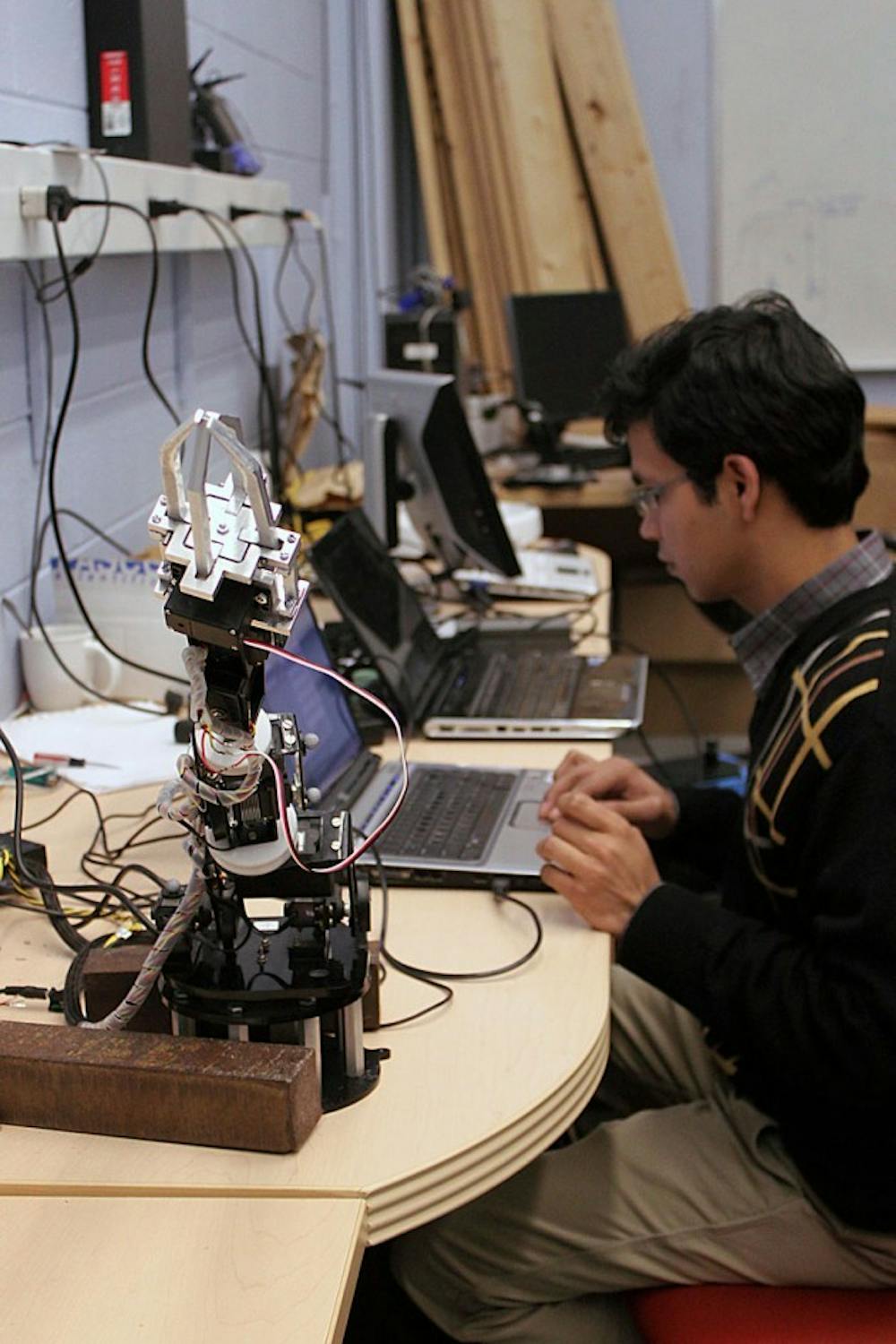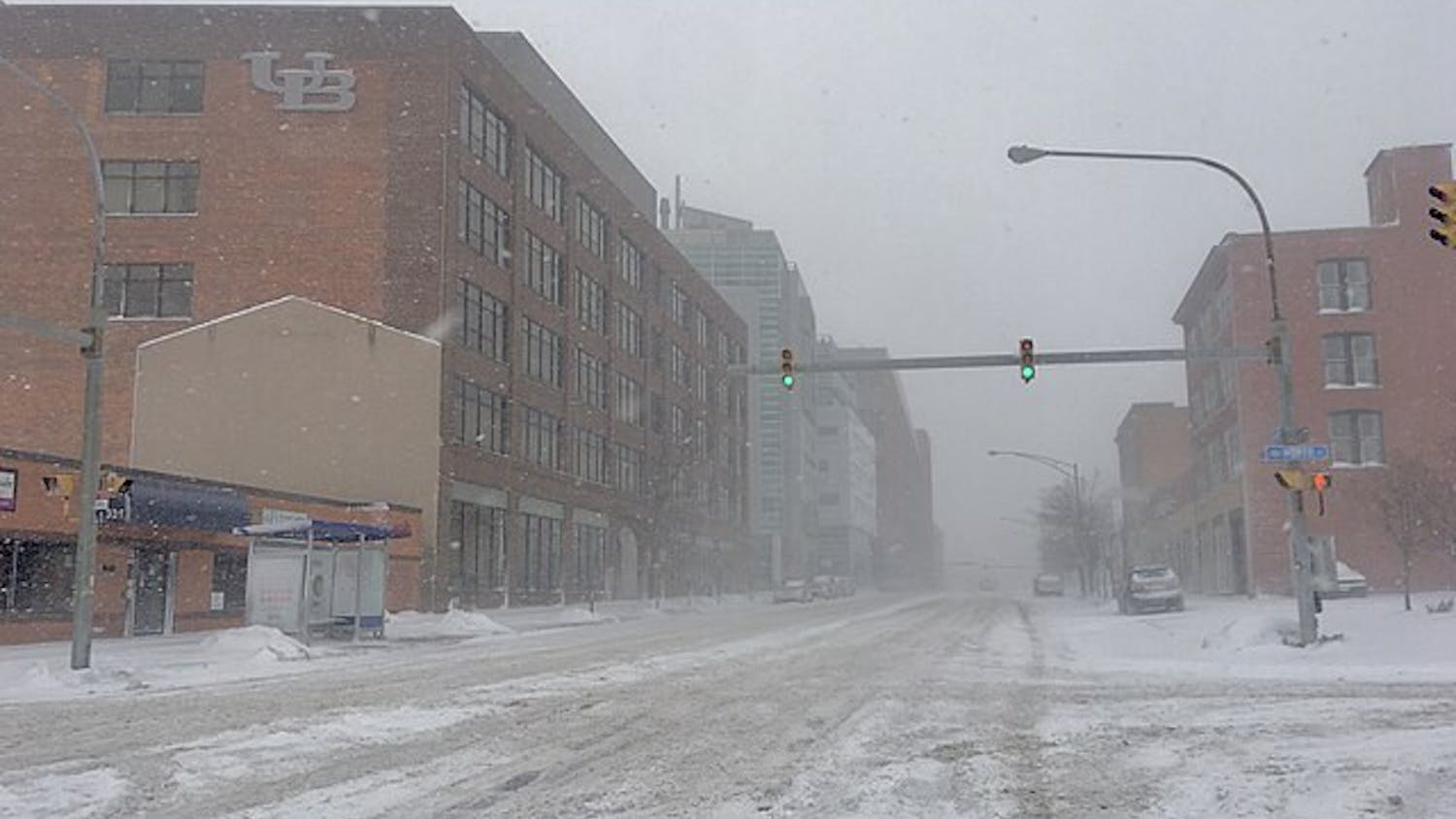The Space Bulls are taking their education – and competitive streak – to new heights.
Eleven University at Buffalo students (making up a team called the "Space Bulls") have been given the opportunity to collaborate on the National Aeronautics and Space Administration's (NASA) and the National Institute of Aerospace's (NIA) Revolutionary Aerospace Systems Concepts Academic Linkage Exploration Robo-Ops (RASCAL) competition. As one of approximately five teams still in the running across the nation in this competition, their acceptance is stunning in and of itself.
"This is our first year participating; other teams like University of Utah and University of Pennsylvania have been participating in this competition for very long. In fact, their rovers are ready by now, and we are still in the preliminary round," said Kumar Vishwajeet, a Master of Science (MS) student in mechanical and aerospace engineering and the Space Bull in charge of the team's controls. "So, this is a lot of new experience for us. It will be a very tough competition, but we are learning many new things."
The contest challenges university teams to design and construct a "planetary rover and demonstrate its capability to perform a series of competitive tasks at the NASA Johnson Space Center's Rock Yard in Houston, Texas," according to the competition's official website at nianet.org/RASCAL/RoboOps/index.aspx.
"Basically, there is a rover, or a six-wheeled robot, that is going to be in Houston and controlled from the UB campus over the Internet. The rover will be monitored with cameras… from here we'll be navigating the rover over the field [in Houston]," said Dipen Dave, an MS student in mechanical and aerospace engineering and one of the Space Bulls working on the rover's navigation. "The idea of the competition is to pick up as many stones as possible – there are 30 in the field. The terrain is a mock terrain of Mars, the moon, and some other planets. It has a rough terrain, a sandy terrain, and it has a hill. So basically we have to navigate through all these things."
NASA judges will supervise the competition, and scoring will be based on the ability to perform the task, adherence to requirements, time, and the inclusion of the Education and Public Outreach component: as part of the competition, teams are required to utilize the Internet and social media sites in order to educate and reach out to other students and generate further interest.
"The scoring for the public outreach part is based on the number of hits on the YouTube video and the number of hits on the website on the day of the competition because we will be having a live telecast of the competition on the website," Dave said.
The teams may be composed of undergraduate and graduate students and a faculty member. Dr. Puneet Singla, an assistant professor in the department of mechanical and aerospace engineering, is the faculty member involved with the Space Bulls. Due to the fact that the competition involves so many different areas of expertise, the team had to pull from many academic departments and integrate knowledge in order to form a cohesive plan.
"When we had the first meeting, we figured out all the areas we had to work on. We had to work on the mechanical aspect, the navigation; we needed someone in computer science, we needed a communications person," said Ravikiran Chollangi, a student working toward his MS in mechanical and aerospace engineering and one of the Space Bulls in charge of the mechanical aspect of the competition. "So we had friends that were working in those things, so we talked to those people and that's how we formed our group."
As one of the qualifying teams, the Space Bulls received a stipend of $5,000 from NASA to purchase materials and another $5,000 travelling stipend for the team. Team members said they are also receiving funds from the mechanical engineering department and are looking into gaining more support from the electrical engineering department. Additionally, they are involved in discussions with other industries to help secure additional sponsorship, but the exact level of assistance has yet to be determined.
"Sponsorship is very important; it's not only money, but we want people to get involved in this kind of thing. It doesn't matter how much money they give us; what matters is that they get themselves involved," Vishwajeet said.
The team is trying to recruit others, especially juniors, so that the Space Bulls' efforts can continue in the future. This is the first year that UB is participating in the competition, so it's a critical time to generate interest among younger students, according to Vishwajeet.
The team has run into a number of challenges thus far, but members are very optimistic about their progress. For instance, one of the goals is to make the lightest rover – it not only improves scores in the competition, but there are also immense financial gains if the team's creation is used in aerospace technology.
"If you can save one kilogram of weight on the robot, it saves approximately $2,000; thus, the less you spend on fuel: the cost of launching the rocket," said Pramod Chembrammel, an MS student in mechanical and aerospace engineering and one of the Space Bulls working on the mechanical aspect of the rover. "You can assume how much more money you would save to launch a satellite or a robot to Mars; they are looking for lighter rovers so they can use the same concept in their future interplanetary explorations. They are looking for new equipment and better designs."
Additionally, the team is facing difficulty in reducing the lag time in transferring data from the cameras to their screen. The Space Bulls are currently experiencing a two- to five-second delay when they transmit information, but the lag needs to be on the order of milliseconds by the day of the competition, according to Shailaja Nagarajan, an MS student in electrical engineering and one of the Space Bulls working on the telecommunications aspect.
"We have to transfer the data we collect from Houston to Buffalo so we can control from here," Nagarajan said. "We need to minimize the amount of data we transfer; we are working on taking less-resolution pictures, streaming less-resolution videos, and sending only the data which we will need for sure."
Sagar Keer, a MS student in computer science and one of the volunteers with the Space Bulls, is working on the software with the manipulator on the rover, which will be controlled by a joystick. Although he has worked with this type of programming language before, he admits the task is quite difficult. However, he is highly interested in astronomy, so working on a project for NASA is fun for him.
Vishwajeet admits that the project is difficult because everything must be made from scratch, but he is confident in the Space Bulls' progress.
"It's not just about winning the competition; it's about learning," Chembrammel said. "This is such a multidisciplinary thing, so we want to set a platform for juniors to continue this."
The team will be holding information sessions in the Student Union lobby on April 11, 15, 18, and 22. Simulations may be administered during those times.
The competition, which will take place from May 22 to 25, will be broadcast live on the Space Bulls' website, at spacebulls.eng.buffalo.edu. In order for UB's team to gain the highest number of points for the public-outreach portion, viewership must be high during the actual contest. Additionally, the Space Bulls request that all students "like" their Facebook page, at "Space Bulls (UB) Robo-ops Team." If the team wins the RASCAL competition, it will receive a $5,000 prize and/or travel to the NASA Desert RATS analog test site in Arizona.
Email: features@ubspectrum.com





